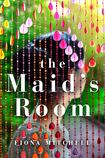
In her excellent manual on fiction, 13 Ways of Looking at the Novel, the Pulitzer Prize-winning author Jane Smiley notes that one of the biggest mistakes new writers make is to pile on the detail. Detail after detail only partially depicted tries the reader's patience, suggesting randomness, a sense that the author is describing both too much and too little at the same time.
This problem weighs heavily in Fiona Mitchell's debut, The Maid's Room, a novel whose interesting world is made dull with detail. An evocative opening paragraph, some of the best writing in the book, sets up the story of Filipino maids working in an expat community in Singapore: "This is where she sleeps. A cupboard. A bedroom. A windowless box. She flicks the light switch and there is the bucket speared with mops, the washing machine and the mattress on the floor."
The rest of the prologue takes on a journalistic tone as it describes the setting of the expat compound: “They look like City of London offices dominated by glass, except that there are balconies on these buildings. There is a woman on one of the balconies, sitting beneath a green canvas sun umbrella pressing a cigarette to her lips.”
That the author has a background in journalism goes some way to explaining her style, or lack of it, when it comes to her fictional world. Details are delivered in chunks and without finesse. The Maid's Room, inspired by Mitchell's own experiences, has worthy intentions in its setting and themes, but the novel is let down by the writing. Three narrators share the burden: Filipino sisters Dolly and Tala, who have worked in Singapore for years to support their families back home; and new arrival Jules, an English midwife whose husband has taken a transfer so the couple can have a fresh start.
A number of important topics are highlighted through the different voices. Jules and her husband David’s infertility woes and IVF attempts are sensitively related, although they become repetitive by the novel’s end. The exploitation of foreign workers, who are largely voiceless, is seen through Dolly’s struggle and through Tala’s decision to write a secret blog documenting the mistreatment of foreign domestic workers at the hands of spoiled, bored expat women. Unfortunately, neither Tala nor her rival blogger Vanda have the wit to pull off the sardonic tone that Mitchell tries to impart.
Earnest objectives
The PR for the novel emphasises the earnest objectives of the book, noting that there are now more than 230,000 female domestic workers in Singapore, and 67 million domestic workers across the globe, a quarter of whom are afforded no legal rights. Mitchell, a London-based journalist with an Irish father, writes in a detailed author’s note that she felt obliged to give a voice to these workers after living in Singapore herself.
While her intentions are to be commended, real life does not in this instance translate well into fiction. A cast of cliched characters include the panto villain Mrs Heng; lecherous Gavin, who has learned his lines from an afternoon soap – “That husband of yours is a bloody lucky man. Bit of make-up, bet you scrub up all right” – and a host of expat women all equally and indistinguishably egregious. Ma’am Amber is the focus of the group, a woman so lacking in self-awareness she would struggle to see her own reflection in a mirror. It is through Jules’s inner monologue that we come to learn of Amber’s problems at home: “It’s Amber again. What a control freak, but then what with Colby and her depression, Jules should give the woman a break.” It is one of many examples of thoughts relayed in the novel in a highly fictionalised manner.
Other issues include a heavy hand when it comes to flagging – David’s strange behaviour, Dolly’s pills, Tala’s fear of being unmasked as the blogger – and dramatic scenes that lack punch as they jump from one detail to the next, particularly an accident scene involving Amber’s youngest son and the consequences this has for Dolly.
A subplot with Amber’s older son Colby is intriguingly set up but comes to nothing. Stilted dialogue compounds these problems: “Funny, thinking back, some of the other analysts used to call Amber ‘The Smiling Assassin’,” says Amber’s husband, Sir Tor, to his new neighbours by way of explanation of his troubled marriage, as if it was just dawning on him at this convenient juncture.
The real issue, though, is with the plodding details – "She walks into the upstairs living room with its thin marble table against one wall, an L-shaped grey fabric sofa against another"; "They say their goodbyes and she hangs up" – that continually drag the story down. As writers from Nabokov to Stephen King have noted, it is specific details chosen with the utmost care that bring a work of fiction to life. In the case of The Maid's Room, however, the devil is in the detail.













